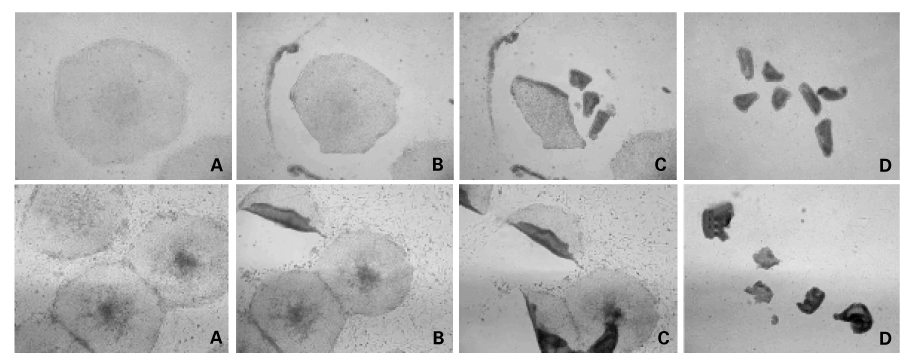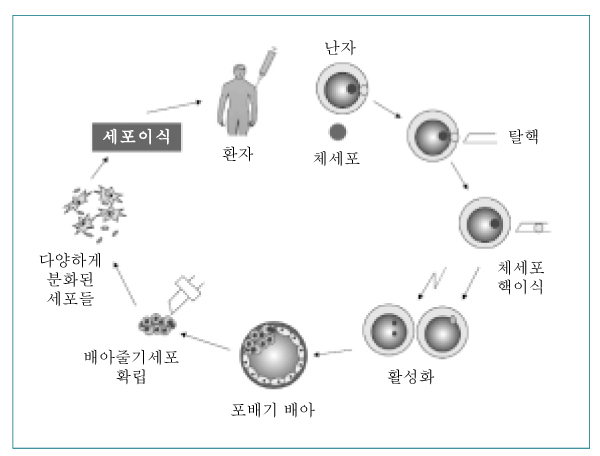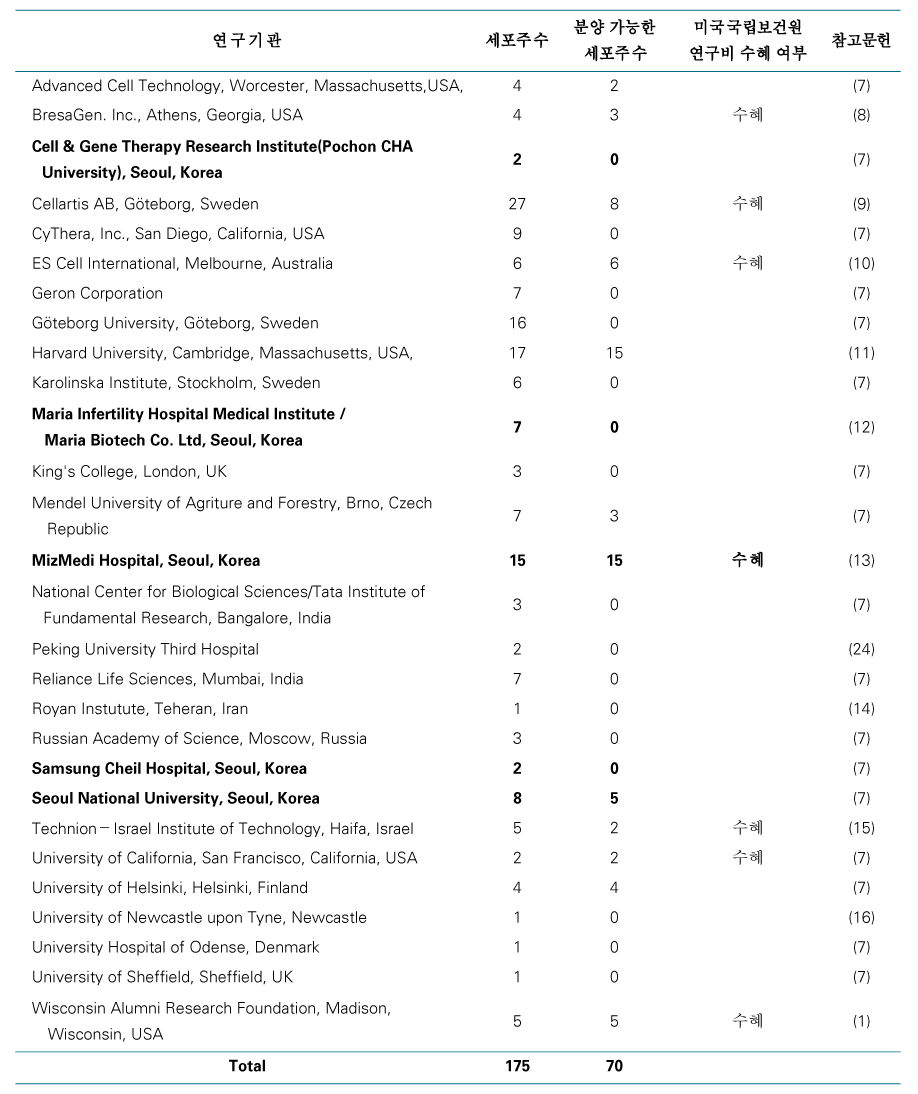 |
 |
- Search
| J Korean Med Assoc > Volume 47(10); 2004 > Article |
Abstract
The 21st century is considered as the era of Biotechnology (BT). Recently, the regenerative medicine using stem cells has been recognized as the future medicine, especially for the devastating diseases such as neurodegenerative diseases, heart disease, diabetes, infertility and liver diseases. Human embryonic stem cells (hESCs) are at the center of the stem cell research due to its ability to proliferate unlimitedly without differentiation (self-renewal) and to differentiate into the derivatives of all three germ layers including germ cells with appropriate treatments (pluripotency). A total of 173 hESC lines have been derived since the first derivation by Thomson et al. in 1998, and 70 hESC lines are currently available for distribution including hESC line (Miz-hES1) established at the MizMedi Hospital. The major goal of hESC research is to provide basic and clinical clues for cell replacement therapy, whose targets are aforementioned incurable diseases. One of the landmarks in hESC research is the derivation of a hESC line from a cloned human blastocyst, which has recently been done by Korean scientists. This made it possible to overcome the issue of immune-mediated rejection following cell replacement therapy using hESCs. Guided differentiation of hESCs into specific cell types by treating growth factors and drugs or by genetic manipulation by using overexpression or an RNAi knockdown system is one of the most active research areas. Combined efforts towards the guided differentiation of hESC into specific cell types and the cloning of hESC from a cloned human blastocyst will overcome a list of diseases hitherto considered to be incurable.
References
1. Thomson JA, Itskovitz-Eldor J, Shapiro SS, Waknitz MA, Swiergiel JJ, Jones JM, et al. Embryonic stem cell lines derived from human blastocysts. Science 1998;282:1145-1147.
2. Amit M, Margulets V, Segev H, Shariki K, Laevsky I, Itskovitz-Eldor J, et al. Human feeder layers for human embryonic stem cells. Biol Reprod 2003;68:2150-2156.
3. Hovatta O, Mikkola M, Gertow K, Strmberg A, Inzunza J, hrlund-Richter L, et al. A culture system using human foreskin fibroblasts as feeder cells allows production of human embryonic stem cells. Hum Reprod 2003;18:1404-1409.
4. Lee JB, Lee JE, Park JH, Kim SJ, Kim MK, Yoon HS, et al. Establishment and maintenance of human embryonic stem cell lines on human feeder cells derived from uterine endometrium under serum-free condition. Biol Reprod 2004;(In press).
5. Amit M, Shariki C, Margulets V, Itskovitz-Eldor J. Feeder layer- and serum-free culture of human embryonic stem cells. Biol Reprod 2004;70:837-845.
6. Carpenter MK, Rosler ES, Fisk GJ, Brandenberger R, Ares X, Rao MS, et al. Properties of four human embryonic stem cell lines maintained in a feeder-free culture system. Dev Dyn 2004;229:243-258.
7. International Society for Stem Cell Research homepage.
8. Mitalipova M, Calhoun J, Shin S, Wininger D, Schulz T, Stice S, et al. Human embryonic stem cell lines derived from discarded embryos. Stem Cells 2003;21:521-526.
9. Heins N, Englund MCO, Sj blom C, Dahl U, Tonning A, Semb H, et al. Derivation, Characterization, and Differentiation of Human Embryonic Stem Cells. Stem Cells 2004;22:367-376.
10. Reubinoff B, Pera M, Trounson A, Bongso A. Embryonic stem cell lines from human blastocysts:somatic differentiation in vitro. Nat Biotechnol 2000;18:399-404.
11. Cowan CA, Klimanskaya I, McMahon J, Atienza J, Witmyer J, Melton DA, et al. Derivation of embryonic stem-cell lines from human blastocysts. N Engl J Med 2004;350:1353-1356.
12. Park SP, Lee YJ, Lee KS, Ah Shin H, Cho HY, Lim JH, et al. Establishment of human embryonic stem cell lines from frozen-thawed blastocysts using STO cell feeder layers. Hum Reprod 2004;19:676-684.
13. Park JH, Kim SJ, Oh EJ, Moon SY, Roh SI, Yoon HS. Establishment and maintenance of human embryonic stem cells on STO, a permanently growing cell line. Biol Reprod 2003;69:2007-2014.
14. Baharvand H, Ashtiani SK, Valojerdi MR, Shahverdi A, Taee A, Sabour D. Establishment and in vitro differentiation of a new embryonic stem cell line from human blastocyst. Differentiation 2004;72(5):224-229.
15. Amit M, Itskovitz-Eldor J. Derivation and spontaneous differentiation of human embryonic stem cells. J Anat 2002;200:225-232.
16. Stojkovic M, Lako M, Strachan T, Murdoch A. Derivation, growth and applications of human embryonic stem cells. Reproduction 2004;128:259-267.
17. Hwang WS, Ryu YJ, Park JH, Park ES, Lee EG, Moon SY, et al. Evidence of a pluripotent human embryonic stem cell line derived from a cloned blastocysts. Science 2004;303:1669-1674.
18. Pera M, Andrade J, Houssami S, Reubinoff B, Trounson A, Mummery C, et al. Regulation of human embryonic stem cell differentiation by BMP-2 and its antagonist noggin. J Cell Sci 2004;117:1269-1280.
19. Mummery C, Ward D, van den Brink CE, Bird SD, Doevendans PA, Pera M, et al. Cardiomyocyte differentiation of mouse and human embryonic stem cells. J Anat 2002;200:233-242.
20. Assady S, Maor G, Amit M, Itskovitz-Eldor J, Skorecki K, Tzukerman M. Insulin Production by Human Embryonic Stem Cells. Diabetes 2001;50:1691-1697.
21. Al-Hajj M, Becker MW, Wicha M, Weissman I, Clarke MF. Therapeutic implications of cancer stem cells. Cur Opin in Genetic Dev 2004;14:43-47.
22. Levenberg S, Huang NF, Lavik E, Rogers AB, Itskovitz-Eldor J, Langer R. Differentiation of human embryonic stem cells on three-dimensional polymer scaffolds. Proc Natl Acad Sci USA 2003;100:12741-12746.
23. Semino CE, Merok JR, Crane GG, Panagiotakos G, Zhang S. Functional differentiation of hepatocyte-like spheroid structures from putative liver progenitor cells in three-dimensional peptide scaffolds. Differentiation 2003;71:262-270.
24. 2004 Seoul Symposium on Stem Cell Research.
- TOOLS
-
METRICS

-
- 0 Crossref
- Scopus
- 1,251 View
- 4 Download
-
Related articles in
J Korean Med Assoc -
Recent Advances in Chromosomal Analysis1997 October;40(10)
Research Progress and Future Perspectives in Animal Stem Cell Research2002 June;45(6)
Recent Advances in Musculoskeletal Nuclear Medicine2003 March;46(3)
Recent Advances in Radionuclide Therapy2003 March;46(3)
Recent Advances in the Treatment of Spondyloarthropathy2003 November;46(11)











